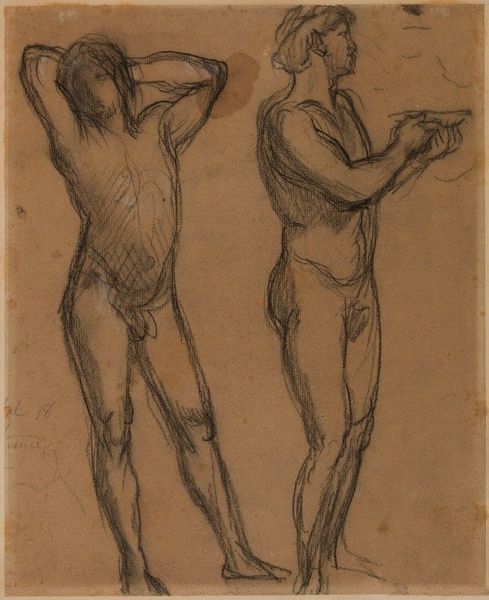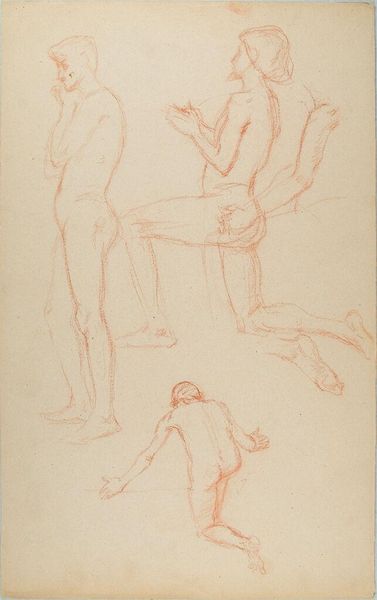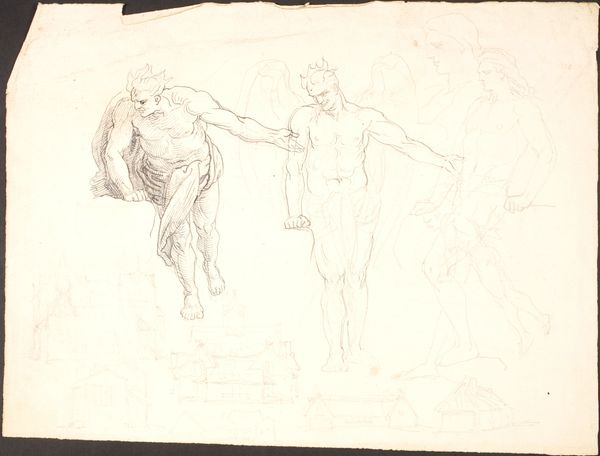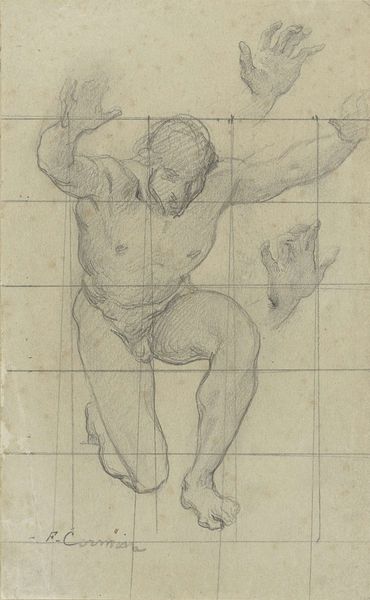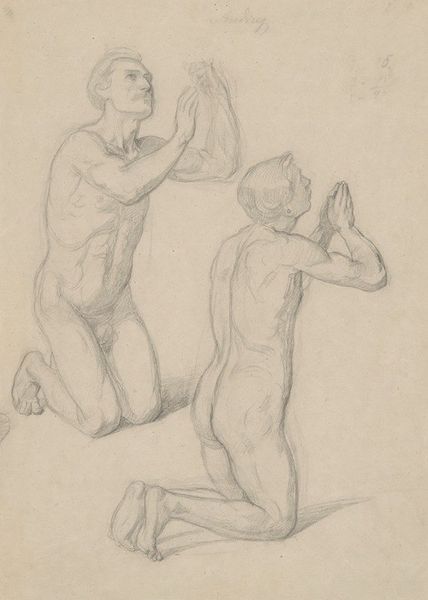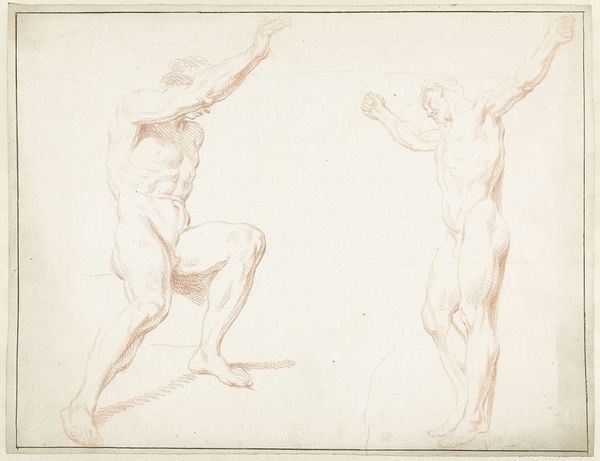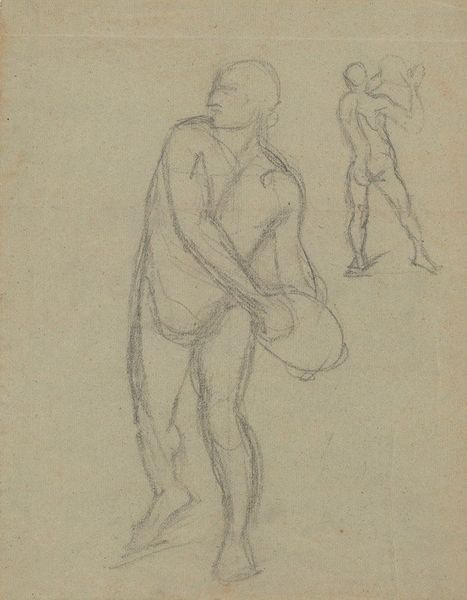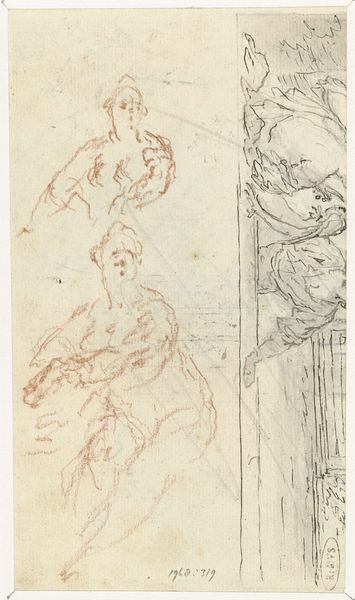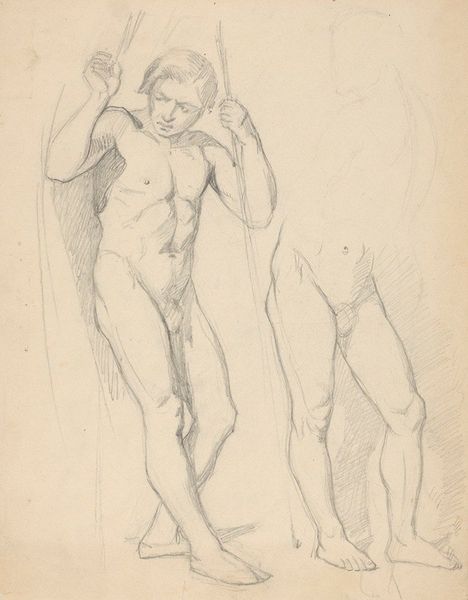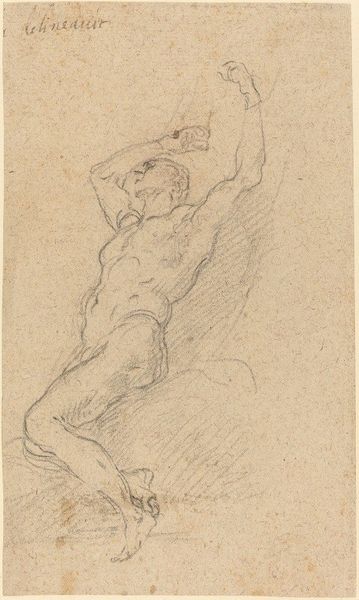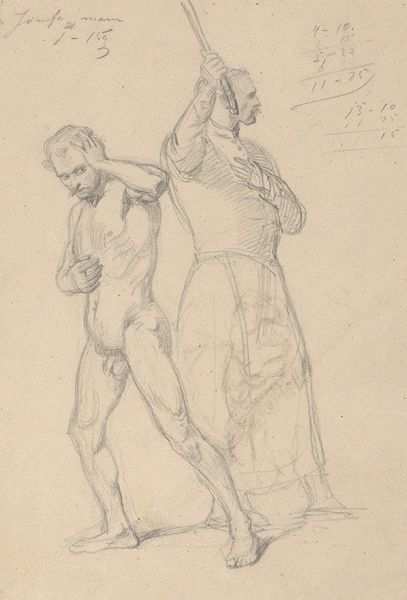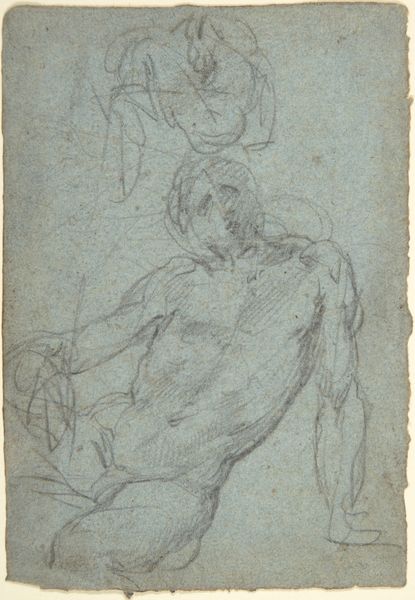![Figure Studies [verso] by Balthus](/_next/image?url=https%3A%2F%2Fd2w8kbdekdi1gv.cloudfront.net%2FeyJidWNrZXQiOiAiYXJ0ZXJhLWltYWdlcy1idWNrZXQiLCAia2V5IjogImFydHdvcmtzLzQ0OTdkNDkxLTQyMmItNDBhYy1iYTM4LWYwOWI4NWNlZWIwZS80NDk3ZDQ5MS00MjJiLTQwYWMtYmEzOC1mMDliODVjZWViMGVfZnVsbC5qcGciLCAiZWRpdHMiOiB7InJlc2l6ZSI6IHsid2lkdGgiOiAxOTIwLCAiaGVpZ2h0IjogMTkyMCwgImZpdCI6ICJpbnNpZGUifX19&w=1920&q=75)
drawing, pencil
#
portrait
#
drawing
#
figuration
#
pencil
Dimensions: overall: 31 x 42 cm (12 3/16 x 16 9/16 in.)
Copyright: National Gallery of Art: CC0 1.0
Curator: Well, this is a sheet of figure studies by Balthus, made in 1948 using pencil. It's a verso work, meaning it's likely a study on the back of another drawing. What strikes you first? Editor: A peculiar, unresolved mood. There is this interesting pose of a figure holding a heavy looking rectangular shape above its head, while on the other side another appears in a relaxed reclined pose; both figures looking in opposite directions! There’s something unsettling and tentative about it, even though it’s just a sketch. Curator: Absolutely, that sense of unease is classic Balthus. He was fascinated with the awkwardness of adolescence and capturing those fleeting, ambiguous emotional states. Though just a sketch, the poses create a narrative tension. Are they related? Opposites? We can't be quite sure. The "peso", this weight the man holds above him, can we talk about symbolism? Is it the burden of maturity or something else entirely? Editor: Maybe. Balthus was known for being deliberately enigmatic, drawing inspiration from Renaissance art while also subtly subverting it. The use of the human form lends itself to an older canon in its aesthetic, though the presentation evokes other thoughts about the position and possible restrictions on each figure. So you wonder about the influence that came with increased exhibition, access to older art in museums and what kind of artistic influences he was now encountering that fed the themes within his paintings. It gives insight into how exhibition can steer artists in different directions of social critique within their pieces, right? Curator: I think that's spot on. It shows how institutions like this very gallery act as funnels and prisms. By placing him in conversation with art history, do we illuminate or obscure Balthus' individual anxieties and motivations, perhaps? It can go either way I think, when artists achieve enough prominence to have extensive retrospective or exhibitions surrounding their lives. Editor: It certainly gives you a lot to ponder. And while not his finished style of artwork we’re seeing today in exhibitions of his work, I always appreciate looking at preliminary studies to learn more about how the artist forms their craft in early practice. I’m grateful for art that makes us feel challenged. Curator: A perfectly open-ended challenge that art presents us every day and it makes art's endurance throughout our constantly changing society something pretty miraculous to behold.
Comments
No comments
Be the first to comment and join the conversation on the ultimate creative platform.
